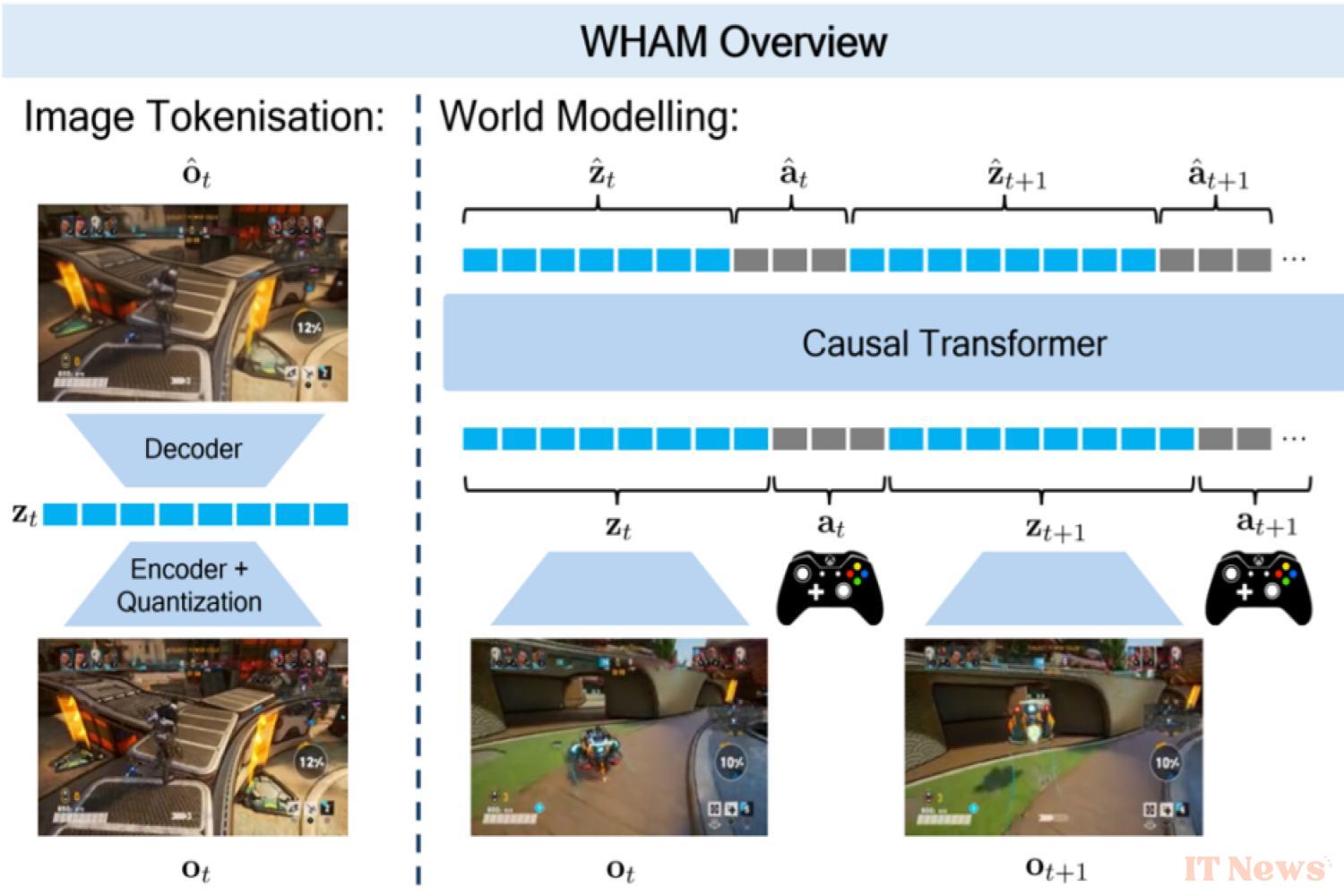Earlier this year, Microsoft unveiled Muse, an AI model specialized in video games that is designed to generate entire gameplay sequences. The project is still relatively nascent... but is starting to produce some pretty impressive results. This weekend, the company unveiled a first technical demo: an imitation of the legendary Quake II, generated entirely by artificial intelligence.
The demo, which you can test yourself at this address, is fairly rudimentary. The resolution leaves something to be desired, the latency is substantial, the frame rate is very low, the scenery is riddled with visual artifacts... There are also a number of prohibitive bugs, such as the fact that certain objects disappear completely once they leave the camera's field of view.
But the whole thing remains functional. The player can indeed move, orient the camera, jump, crouch, shoot, and even explode barrels just like in the original game. Quite impressive when you remember that the whole thing was produced by a set of virtual neurons without human intervention!
A convincing, but very superficial imitation
But whatever the case, it must be admitted that at the moment, Muse is still very, very far from meeting the demands of Phil Spencer, CEO of Microsoft Gaming. As a reminder, the latter had notably stated that this type of AI model could contribute to the preservation of video game heritage, for example by facilitating porting to more recent platforms.
"We could imagine a world where, from game data and videos, a model could learn from old games and make them truly portable on any platform where these models could work," he declared last February. "We've talked about game preservation as a business for us, and these models, with their ability to completely learn how a game works without having to use the original engine on the original hardware, open up a lot of possibilities."
But anyone who is more or less familiar with the video game development process, or how they work, knows that it's still a fad right now.
This is immediately noticeable with this synthetic reconstruction of Quake II; it is obviously only an extremely superficial imitation, devoid of all the nuances that make the original product so charming. However, these details are just as important as the basic gameplay when it comes to resurrecting an old game on a modern platform. As long as Muse and its ilk are unable to grasp them, it will simply be impossible to use them to create quality ports.
A real potential for prototyping
Microsoft researchers, however, seem to be perfectly aware of this. In their blog post, more pragmatic and down-to-earth than Spencer's speech, they insist that this is above all a fairly exploratory research project. They also suggest that users focus on "playing with the model," rather than the game itself.
And that's the whole point of this experiment. This demo shows that before we can deliver full, mature games, let alone replicate classics, these models will likely be used for prototyping purposes. Developers will be able to use them to quickly simulate a gameplay element before building it properly from scratch using conventional methods.
It will therefore be worth keeping a close eye on Muse's progress. Microsoft is likely to release more demos of this kind in the near future. Once the system matures, it will be interesting to see if studios will eventually integrate these tools into their development process, and to observe the impact this technology has on the industry.




0 Comments